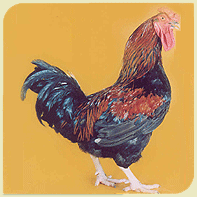This is the fifth and final post on The Economist‘s special report on entrepreneurship (the first four posts were entitled Entrepreneurs as Heroes, The Rise of Entrepreneurialism, More on Global Entrepreneurialism and Looking for Entrepreneurial Magic). I saved this topic until last because I wanted to end the series on a high note. As the current economic crisis has deepened, headlines have screamed about the incompetence and greed of the business leaders who created the crisis in the first place. There’s nothing wrong with making money as long as the money is generated ethically. Just as importantly, if money wasn’t being made (by individuals and businesses) very little good could be done in the world. The final article in The Economist‘s special report discusses how “entrepreneurs are trying to do good as well as make money” [“Saving the world,” 14 March 2009 print issue]. The article begins in Bangalore, India, at a traditional Hindu temple. It is a place that would seem “other worldy” to most westerners, until they went into its back offices.
“The temple has a conference room equipped with state-of-the-art audio-visual aids. Its board of directors includes several leading software billionaires and their wives, providing it with money as well as connections. The monks are entrepreneurs as well as holy men, one moment talking about reincarnation and the next about sustainable delivery models. The temple provides 200,000 local schoolchildren with free meals every day. It achieves this miracle of abundance by a combination of mechanisation and careful management. The temple’s 250 employees use giant machines to clean rice and prepare chapattis. They then pack the food into steel containers and load it into a fleet of custom-made vans which keep the food warm as they crawl through Bangalore’s traffic-clogged streets.”
If you would like to support the entrepreneurial work being carried out by the monks, click here to donate. As the article notes, “Rich people have often turned their hand to philanthropy in their later years, but this old story has acquired some new twists. Today’s entrepreneurs routinely apply business techniques to philanthropy. Some of them are even using a venture-capital model, investing in a range of promising start-ups and making longer-term funding conditional on performance.” This isn’t the first time I’ve written about social entrepreneurs (see my posts entitled Philanthropy at the Top of the Economic Pyramid, The Rise of the Social Entrepreneur, Profit-backed Social Philosophy, Venture Capitalist Philanthropy, and Capitalism and the Net Generation). Social entrepreneurs are guided by an internal moral compass that motivates them to succeed so that they can help others. As the article notes, “Social entrepreneurs often blur the distinction between making money and offering charity. Some use the profits from their main business to cross-subsidise their charitable work.”
The article makes it clear that you don’t have to be rich to have a social conscience. When a couple of motorcycle enthusiasts heard that motorbikes used to support African healthcare efforts were in a constant state of disrepair, they created Riders for Health to help change the situation. The organization “now helps to provide 11m people with health care in inaccessible parts of Africa.” Social entrepreneurs don’t operate only in the developing world either. When Princeton University student Wendy Kopp felt she needed to help improve education for America’s poor children, she set about trying to convince Ivy League students to teach at state schools. “The trick was to ask them to compete for the honor of doing something that, a few years earlier, none of them would have been remotely interested in. The program has now been copied around the world.”
 Of course to reach the greatest number of the world’s poor one must go developing nations. The article provides a couple of interesting examples of “for profit social enterprises” that are commonly referred to as FOPSEs. The first FOPSE discussed was Keggfarms of India and the second was a South African FOPSE called Lapdesk. Harvard Business School professor Daniel J. Isenberg, who teaches about entrepreneurship, uses both companies as case studies for his courses. In an article about Keggfarms, Isenberg writes about the first time he met its founder Vinod Kapur. Isenberg was fascinated by Kapur’s dignified appearance, which seemed incongruous with his role as breeder of “superchickens” for the poor. Isenberg was also fascinated by Kapur’s tale of how he established a business that raises and distributes superchickens across India. His business benefits everyone associated with Keggfarms from its employees to the rural villagers who are its customers [“An Indian FOPSE,” Innovations, Winter 2008]. As Isenberg describes it, the superchicken is “twice as big and five times as productive as the typical backyard chicken.” He says it is a “beautiful, big, colorful bird” whose meat and eggs are as flavorful as any he has ever eaten. According to The Economist, the Kuroiler (as the superchicken is known), is “resistant to disease, capable of surviving on farmyard scraps, strong and wily enough to fight off predators.”
Of course to reach the greatest number of the world’s poor one must go developing nations. The article provides a couple of interesting examples of “for profit social enterprises” that are commonly referred to as FOPSEs. The first FOPSE discussed was Keggfarms of India and the second was a South African FOPSE called Lapdesk. Harvard Business School professor Daniel J. Isenberg, who teaches about entrepreneurship, uses both companies as case studies for his courses. In an article about Keggfarms, Isenberg writes about the first time he met its founder Vinod Kapur. Isenberg was fascinated by Kapur’s dignified appearance, which seemed incongruous with his role as breeder of “superchickens” for the poor. Isenberg was also fascinated by Kapur’s tale of how he established a business that raises and distributes superchickens across India. His business benefits everyone associated with Keggfarms from its employees to the rural villagers who are its customers [“An Indian FOPSE,” Innovations, Winter 2008]. As Isenberg describes it, the superchicken is “twice as big and five times as productive as the typical backyard chicken.” He says it is a “beautiful, big, colorful bird” whose meat and eggs are as flavorful as any he has ever eaten. According to The Economist, the Kuroiler (as the superchicken is known), is “resistant to disease, capable of surviving on farmyard scraps, strong and wily enough to fight off predators.”
Lapdesk provides portable desks to the 4.2 million poor school children in South Africa who need them. The desk, as the name implies, sits on a student’s lap and provides a stable surface so that the child can study and do homework. The Lapdesk also serves as an advertising platform. “The desks are covered in advertisements, so [Shane] Immelman, [founder of Lapdesk], is able to hand them out free, but they have proved so popular that better-off people have started to buy them, and some of them are now being exported to other developing countries.” The Economist stresses that social entrepreneurism is at its best when it sees the poor “as workers and customers” and not merely as people who require sympathy and charity. Business people have come to realize what University of Michigan professor C.K. Prahalad has been preaching for years, you can make money selling to the poor. “Billions of pennies can add up to a lot of money.” The article concludes:
“Allowing people to experience the benefits of the market sometimes means helping them to join the market economy. Hernando de Soto, a Peruvian economist who helped to inspire the World Bank’s Doing Business, has long argued that creating property rights in the developing world is a precondition for encouraging entrepreneurialism there. Regional development banks such as the African Development Bank and the European Bank for Reconstruction and Development claim they are trying to build local environments in which entrepreneurs can flourish. This seems to hold out the prospect of a continuous cascade of prosperity as successful entrepreneurs discover new markets and then use the fruits of their efforts as social entrepreneurs to generate yet more successful enterprises. But the world is never as simple as that: entrepreneurship creates uncertainty and competition as well as innovation and prosperity.”
Although the article ends on a note of caution, taken as a whole The Economist‘s special report on entrepreneurship offers a lot more optimism than pessimism about the role entrepreneurs will play in helping the world recover from the current economic crisis. That’s not surprising. I would expect any report about entrepreneurs to be optimistic since it should reflect the positive attitude embraced by all successful entrepreneurs. The fact that entrepreneurs are springing up around the globe is a good sign that a brighter future is on the way.




